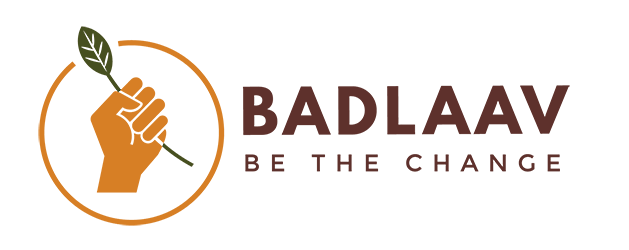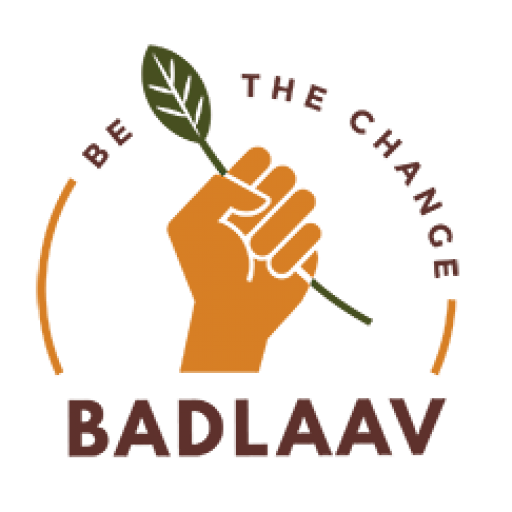“I remember sitting in a corner by myself, unable to open the chocolate bar bribe and feeling sick to my stomach. I blocked out the memory, until the day when I discovered that what happened to me had an acronym that could be found in the glossary of a medical anthropology textbook.”
~ Maryum Saifee, FGM survivor
Every society has norms – often referred to as traditional practices – that are carried out in context of meaningfulness and fulfilment of the functions of the members of the society. These practices, beneficial or harmful, are safely guarded, practiced over decades, and passed down over generations.
One deeply rooted practice, often carrying an amalgam of severe mental and physical consequences for the women and young girls being subjugated to it, is the practice of Female Genital Mutilation. As an infringement on the physical and psychosexual integrity of women and girls, FGM reinforces the inequity prevalent in the communities where it is practiced, and encourages oppression of women and girls by violently taking away their basic right to bodily integrity. The right to integrity and the highest attainable level of physical and mental health are universally recognised human rights, and are disturbingly violated during the practice of FGM. Today, FGM/C is recognised as a human rights violation and is one of the many manifestations of gender inequality.
Although cultural practices and social conventions do carry relevance to the functioning of a community and its meaningful aspects, it is true that culture is in constant flux and adapts to change over generations. As people evolve, their understanding of the indignity of harmful practices like FGM comes in and so does the possibility of the abandonment of such practices.
What is Female Genital Mutilation?
As elucidated by UNESCO, ‘Female genital mutilation (FGM) comprises all procedures that involve partial or total removal of the external female genitalia, or other injury to the female genital organs for non-medical reasons.
Two hundred million girls and women in the world are estimated to have undergone female genital mutilation (FGM) and another 15 million girls are at risk of experiencing it by 2020 in high prevalence countries (Female Genital Mutilation/Cutting: A global concern, UNICEF, New York, 2016).
Like other forms of gender-based violence, FGM is a representation of the manifestation of power and means of oppressing women and girls by controlling their sexuality, intended to maintain male dominance and exploitation. As a violation of a woman’s integrity, both physically and psychologically, FGM is based on an ideology amongst different societies that encourage the practice that women should be moulded, shaped or cut to appeal to a man’s pleasures.
| Classifications of FGM Clitoridectomies Type I: removal of prepuce, clitoris Type II: removal of prepuce, clitoris, excision of part of labia minora Infibulations Type III: removal of clitoris, labia minora; excision of approximately two-thirds labia majora Type IV: removal of clitoris, labia minora; excision of labia majora with extensive closure, leaving small posterior opening |
The Criminalization of FGM – A discussion
As a practice, FGM is derogatory to a woman, her identity, and her self-awareness. This gruesome practice impairs a woman to her absolute core by snatching away her most important rights – her right over her bodily integrity. FGM results in physical and mental impairments that are beyond recovery and may scar a woman for life.
In most countries, a majority of girls were cut before the age of 5. In Yemen, 85 percent of girls experienced the practice within the first week of their life. The fact that the practice is carried out on girls out of their consciousness and without their informed consent, itself makes it an illegal practice.
In cultures where FGM is an accepted norm, FGM is performed by traditional practitioners – usually an older woman of the community, without anaesthetic and usage of proper instruments. In more affluent communities, it may be carried out by a certified health personnel. In both cases, the procedure causes excruciating pain to a woman for months post the procedure. The immediate consequences of this procedure could be profuse bleeding, infections due to the usage of unsterilised instruments, shock, and injury. In the long-run, the repercussions of this procedure may be infertility, menstrual problems, complications during childbirth, and irreparable psychological problems. Directly or indirectly, FGM can lead to death.
The elimination of FGM is imperative, and step toward the achievement of gender equity, equality and women empowerment. Legislation against FGM is the first step in the process of the elimination of FGM. Legislation against FGM is important as it becomes a formal expression of dissent and disapproval of the practice by the Government of the country. However, bringing in a law to criminalise FGM would be an insufficient strategy to tackle FGM without community-based action and intervention.
Protection from FGM
In India, there are still no specific laws that criminalise FGM or legally define the words FGM/Khafz, or terms like clitoris/labia minora/labia majora. According to the ‘Guide to Eliminating the FGM practice in India’, conceptualised by Lawyers Collective Women’s Rights Initiative (LCWRI) and Speak Out on FGM, the practice of FGM/C may qualify as a form of “hurt or grievous hurt” under the IPC and a crime under Section 3 of the POCSO Act.
Indian Penal Code (IPC): Several forms of violence against women in India are dealt within the Indian Penal Code (IPC). Sections 319 to 326, IPC address various forms and degrees of hurt, and Sections 324 and 326, IPC address the penalties of imprisonment and fines for ‘voluntarily causing hurt’. Although FGM is not explicitly an offense under the IPC, complaints can be registered under Section 326 of the IPC.
Protection of Children from Sexual Offences Act, 2012 (POCSO Act): Section 3 of the Act addresses penetrative sexual assault by any person on any child, and so the practice of FGM may be covered under Section 3, POCSO Act read with Explanation 1 of section 375 IPC.
According to the ‘Guide to Eliminating the FGM practice in India’, “While the practice of FGM may be addressed under the existing laws of sexual assault, child sexual abuse and domestic violence, addressing the FGM practice requires a more ‘holistic approach’. Such an approach needs to address the various other aspects of FGM/C including abetting or aiding the practice, propagating the practice, prevention of FGM/C, regulations on medical/health professionals who carry out this practice, duty to report, support and rehabilitative provisions and awareness generation.”
FGM: Around the World
Worldwide, young girls and women between the ages of 0-14 and 15-49 undergo FGM hidden away under the shadows of patriarchy and oppression of females and their sexuality. Of the estimated 200 million girls and women who have undergone FGM, it is believed that more than half live in just three countries – Indonesia, Egypt and Ethiopia. UNICEF’s data work on FGM/C suggests that practice of FGM is mostly prevalent in a swath of countries from Africa, countries in Southeast Asia like Indonesia, areas of the Middle East such as Iraq and Yemen, and within communities from these areas.
However, it is true that FGM is a human rights issue that impacts girls and women worldwide, and its elimination is a global concern. Primary sources of nationally representative data on FGM, usually in the form of household surveys, report that FGM is a practice that is performed even in the so-called developed countries of the world. In spite of being in the ‘Tier 1’ and ‘Tier 2’ categories of the Social Progress Index, that reveal a country’s ‘performance across different components of social progress’, the countries of Australia and the United States (respectively) are reported to have been destinations where the practice of FGM is prevalent. Evidence suggests that the FGM exists even in places in India, Malaysia, Oman, Saudi Arabia, the United Arab Emirates, and places in South America such as Columbia, with multiple variations of the practice of FGM.
FGM: In India
In India, it is the Dawoodi Bohra community, a Sia sub-sect, that practices FGM, popularly known as ‘khatna’ or ‘khaftz’. As a practice that is carried down from mother to daughter, there usually has been no involvement of the male members of the family. This presents a form of gender violence that is internalised within the women of the community – a practice that keeps a woman from exploring her sexuality to maintain purity for marriage. Being a religious requirement for the Dawoodi Bohra community, women are socially pressurized to consent to the procedure.
It is a known fact that the Government’s position on Khafz in India is riddled with contradictions. In response to a perception poll by Thomson Reuters Foundation in June 2018, which called India the most dangerous country for women, the Ministry of Women and Child Development released a statement refuting the claim. An excerpt from the statement: “The cases of acid attack are only incidental in the country and as mentioned earlier, practices of stoning, female genital mutilation etc., are not seen here. India can thus not possibly be the worst in the world in terms of violence.” Such contradictions have raised speculations and have left several FGM survivors as well as the general public, highly unsure about where the Government stands with respect to the FGM practice. The prevelance of FGM in certain communities in India is no secret, and an excuse of insufficient data is only speaking for the lack of activity and action taken by the Ministry toward the eradication of FGM.
Beyond the law – Sparking the conversation
Female Genital Mutilation may leave a lasting mark on the life of a girl or a woman who has undergone it. Psychological complications, may be submerged deep in her mind and may trigger mental and behavioural disturbances in the future. In these cases, many girls and women, traumatized by their experiences, may never want to talk about their stories as it may cause them to relive the pain all over again.
This is one of the biggest challenges in raising awareness on FGM – most survivors either suffer in silence due to the trauma they have been through, or are deliberately shamed into silence by their communities. In cases where a woman might want to voice dissent, there is a high chance of them being socially ostracised by their communities.
The efforts to resist and eradicate the practice of FGM requires multi-sectoral, gender-sensitive and culturally-sensitive responses that work throughout communities, sectors and generations. While the prevalence of a formal law to criminalise FGM is of ultimate importance, the responsibility of its implementation goes beyond the law enforcement authorities and into the hands of the communities themselves. In order to deal with FGM effectively, it is necessary to promote its awareness by educating the public and health workers.
This International Day of Zero Tolerance for Female Genital Mutilation, we at Badlaav Social Reform Foundation retake the pledge to stand up against practices like FGM that propagate gender-based violence. We wish to break through the culture of silence around FGM and wish to talk about the stories of FGM survivors.
We invite you to the global conversation to #endFGM.
Featured Image Artwork created by: Hanifa Abdul Hameed


